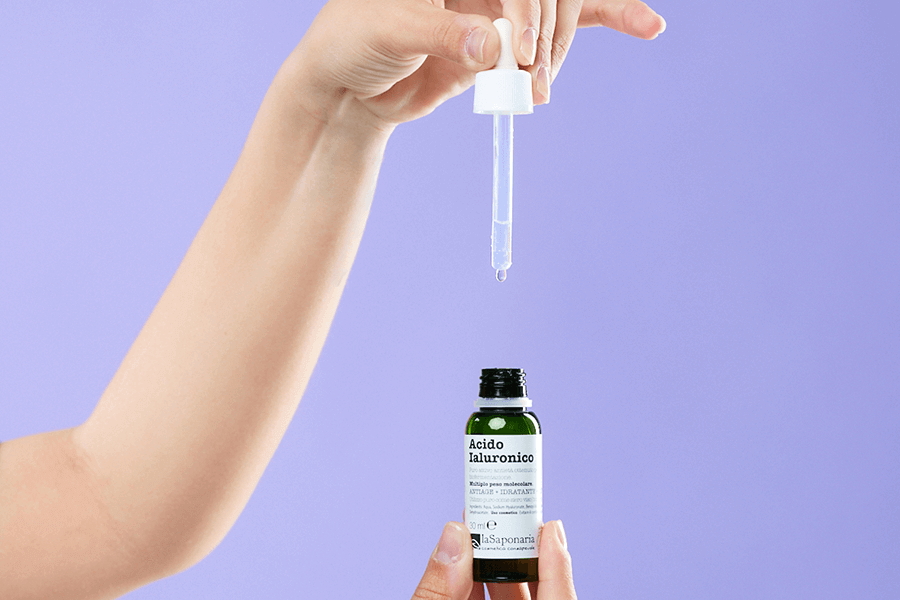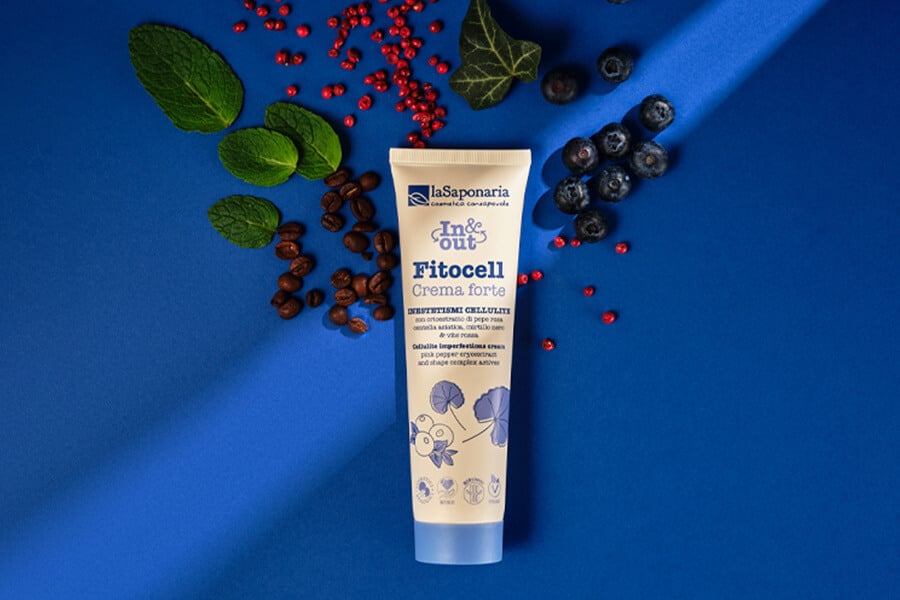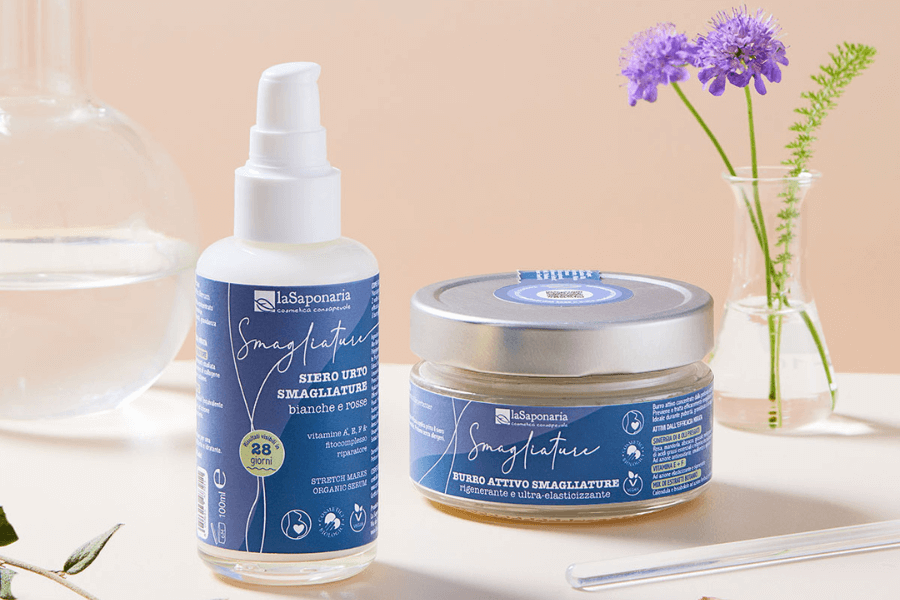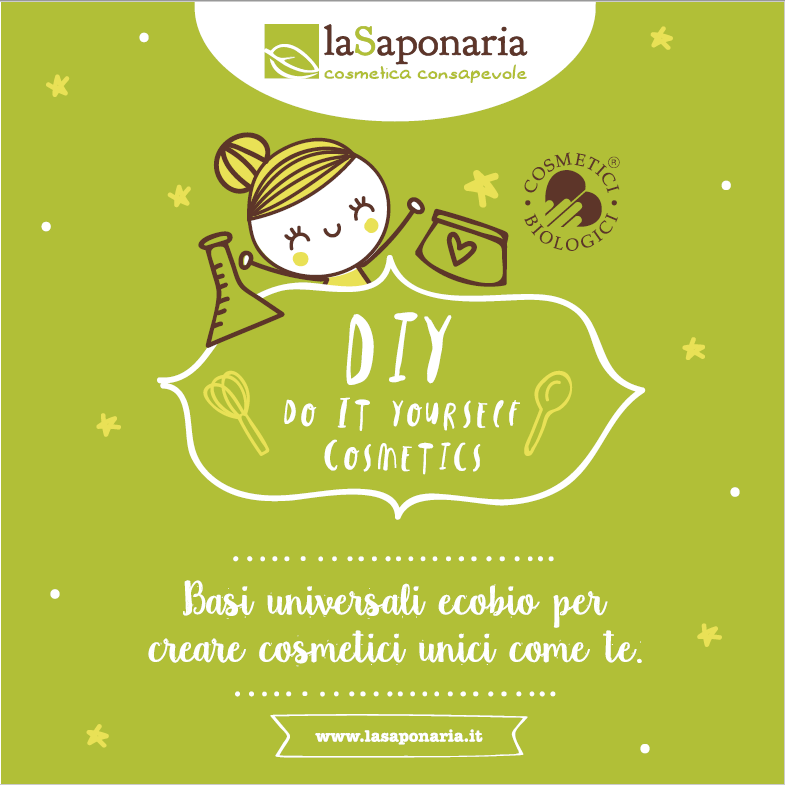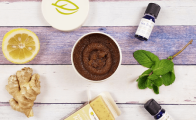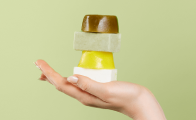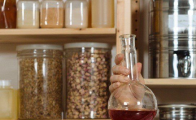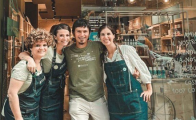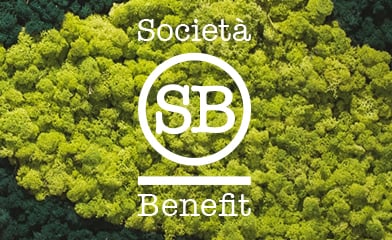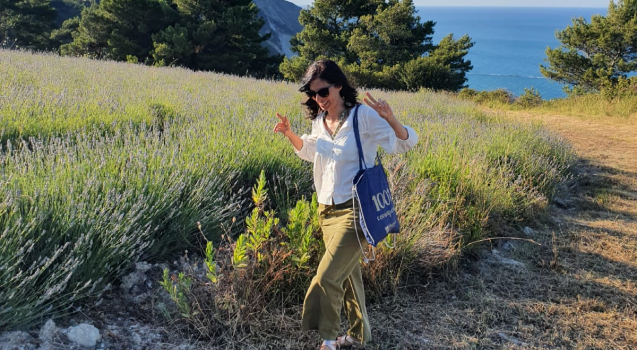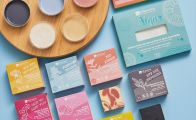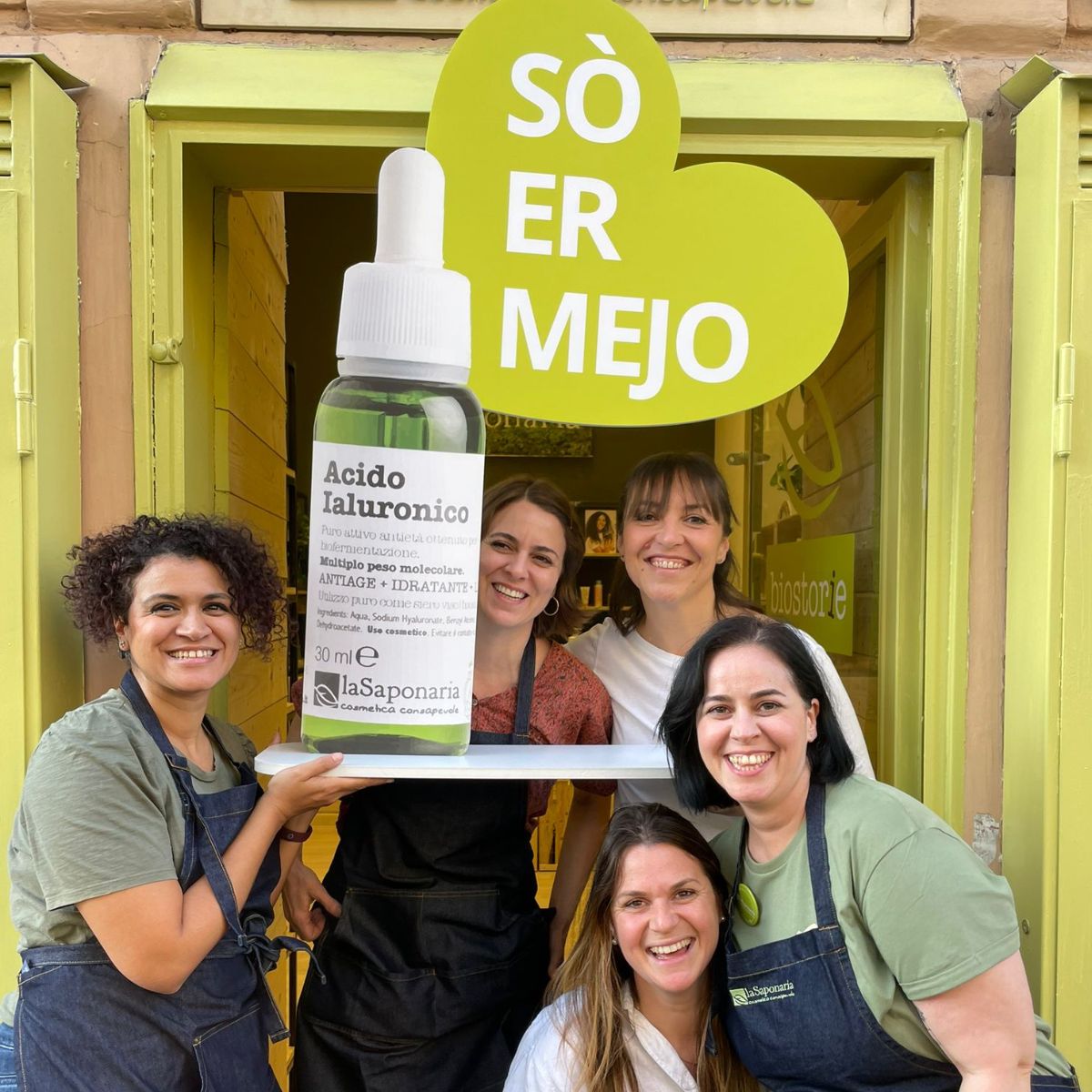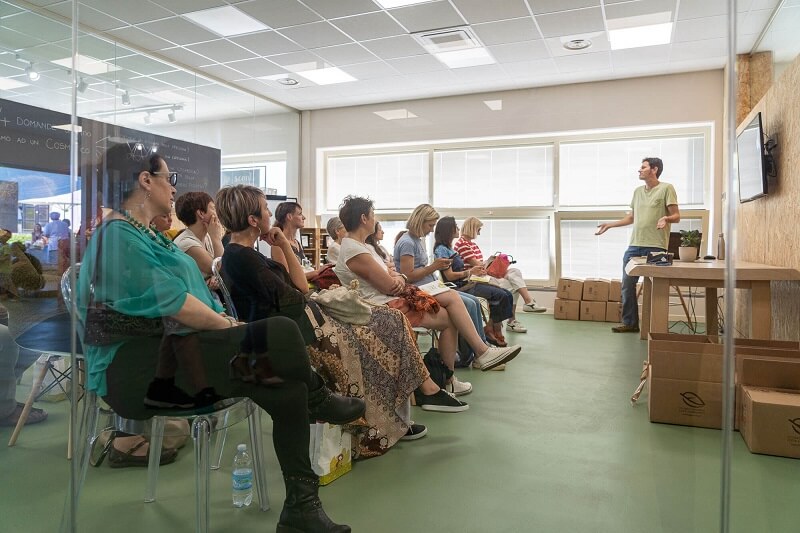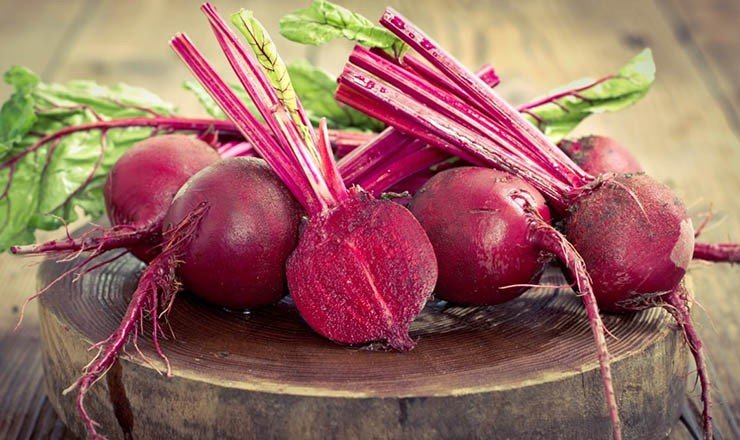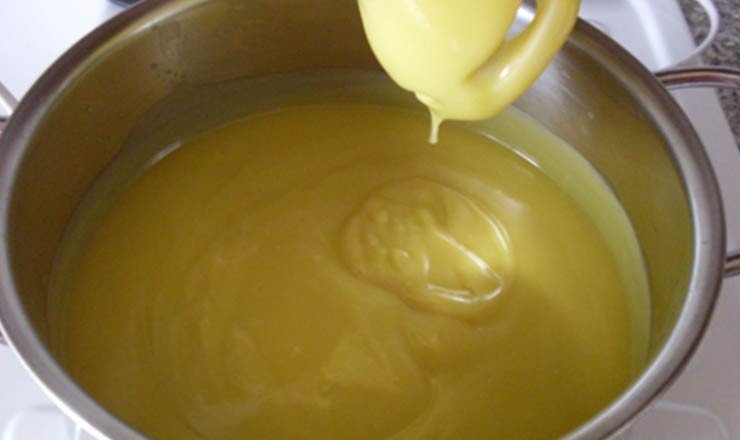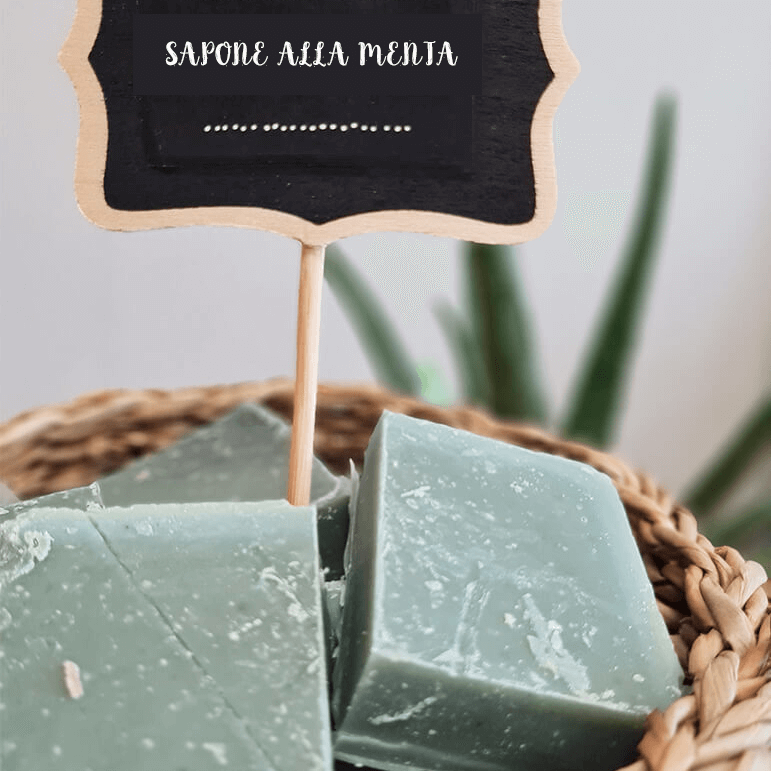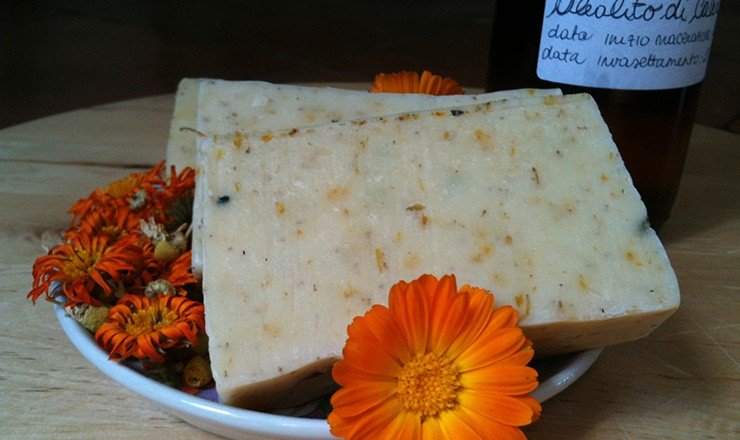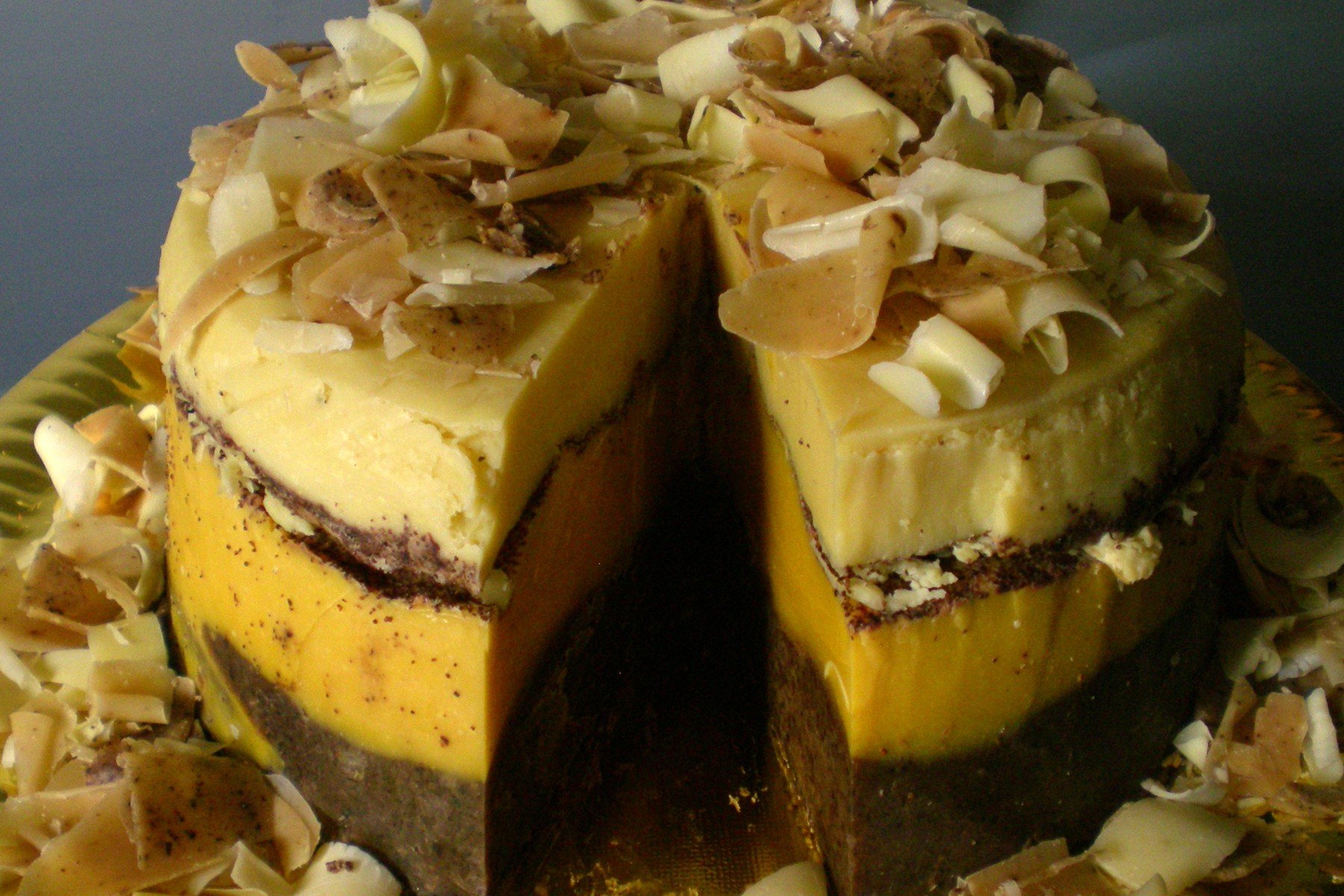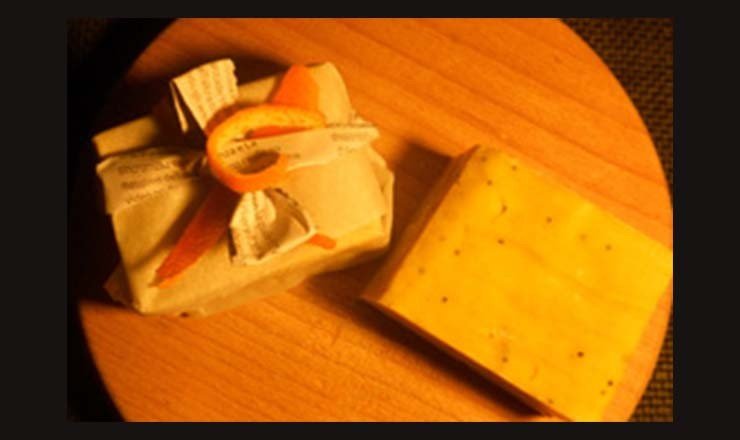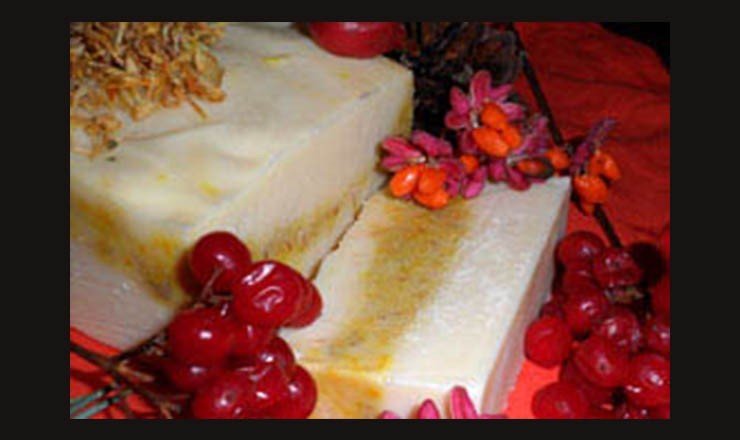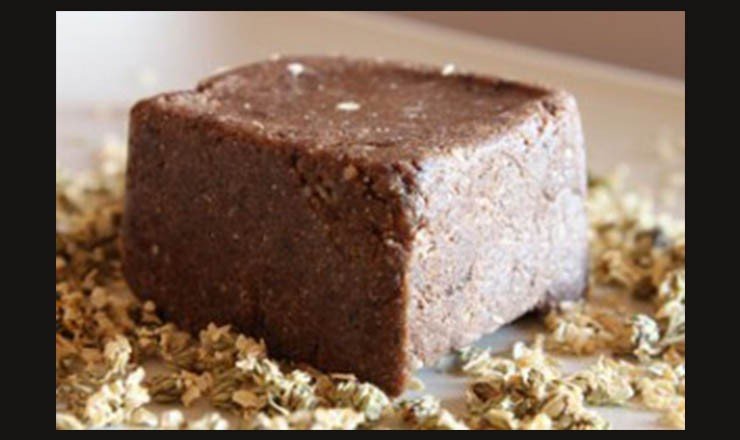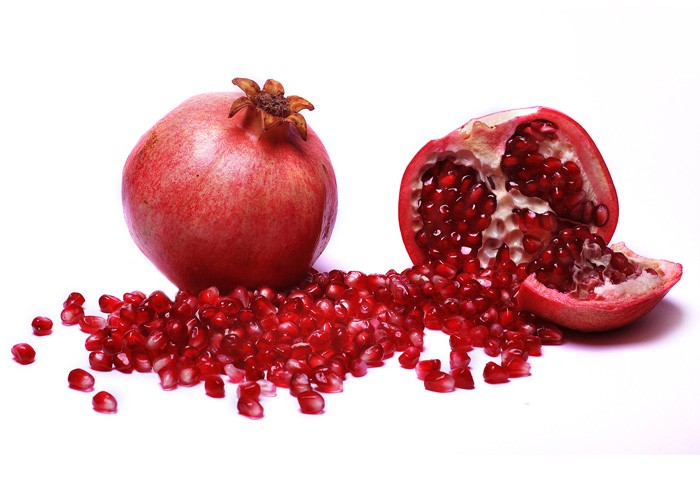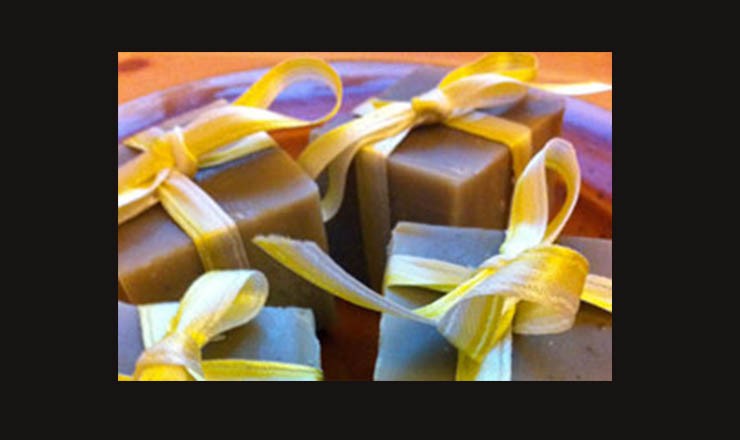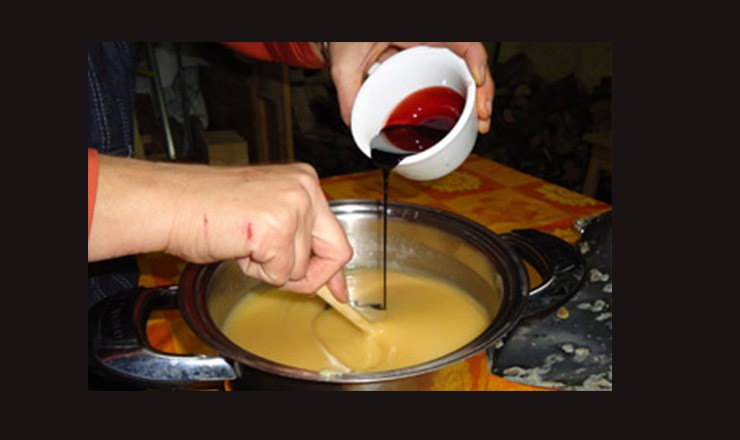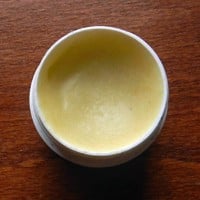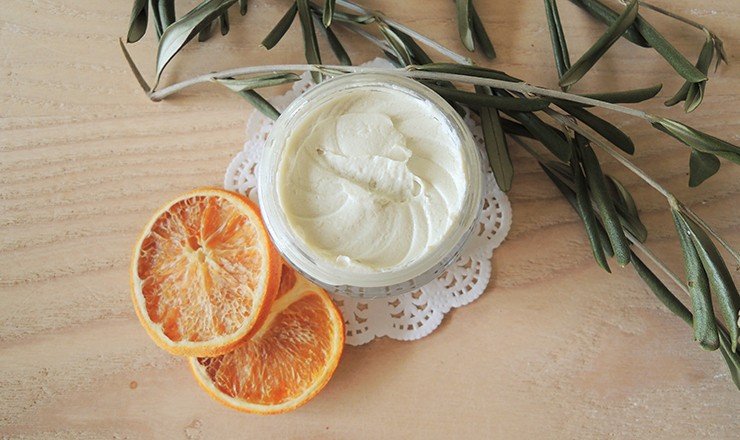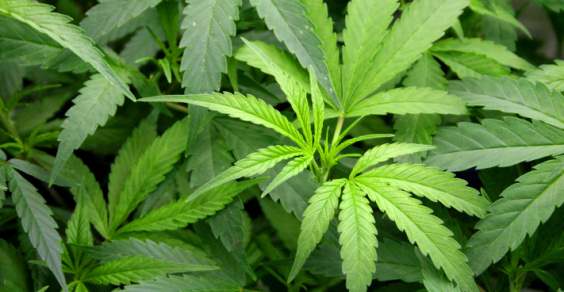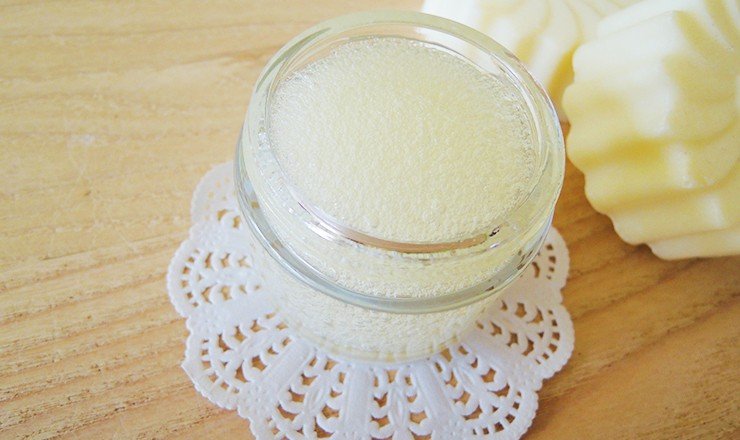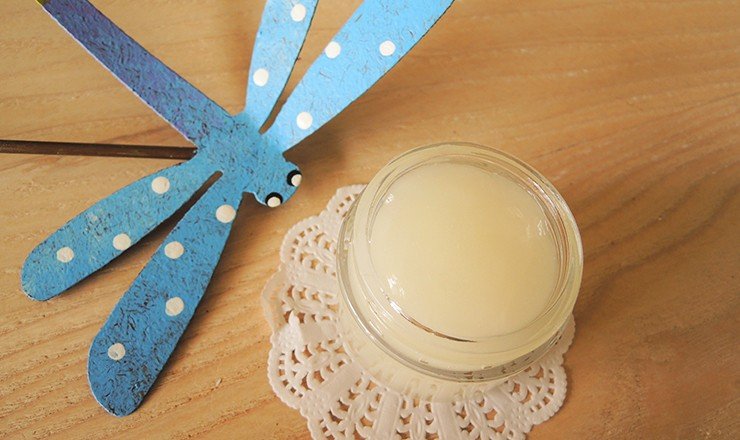Category: Cold method
Maybe the destiny of colored soaps with natural infusions is to become all shades ranging from whitish to yellowish and from yellowish to brownish.
At least that's what happened to my Christmas soap ...
I was studying a red soap with white dots, in full color theme… when red turnips came to mind. And those dried pale yellow flowers of helichrysum that I had stored somewhere in the house for future use.
I suspected that the pigments contained in the red turnip reacted with the basic caustic soda… and I was sure of this when the product was finished. The soap has turned pale greenish to brownish.
Here is a simple and cute recipe for making a home-made Marseille soap using the cold method. It was Elisa, a friend of ours who suggested it.
Making soap at home is easier and gives more satisfaction than what you think: there are two methods, the hot one and the cold one. We also talk about it in our book, "Il primo sapone non si scorda mai" (The first soap is never forgotten), where you can find many recipes to start self-producing in full autonomy and awareness
We use the cold method to make Marseille soap at home:
“It was back in 2007, I still didn't know that soon I would meet Lucia & Luigi. I was already taking my first steps into the magical (I'm not kidding!) world of soap making. I had this idea in my head of a large pot on the fire, and a huge ladle to turn and turn the dense substance that was bubbling hours and hours inside ... for me the fools who made soap at home looked a bit like Maga Magò and Amelia. Instead I met Rossella, my Soap Master who made me discover cold saponification. And in 20 minutes I already had my soap there to take shape in a plastic container. And then I met Lucia & Luigi, by the sea, with one of their first stands. And I realized that there were other fools like me messing around making soaps.
The satisfaction of making your own soap is priceless. It is truly magic. "
Here is the procedure for making your own homemade mint soap using the cold process. Always remember to work with gloves, goggles and an FFP3 filtering face mask. Enjoy the whole process!
We offer you another recipe that Laura has experimented for us: calendula and chamomile soap, emollient and anti-inflammatory, suitable for delicate skin!
But let's hear what our self-producing friend tells us:
”I would like to share with you one of my first recipes for home-made natural soaps. Driven by the desire to create a soap to use in the shower, that would avoid me buying shower gel and above all that would respond to the needs of my skin, I formulated this recipe thinking of one of my favorite flowers and which is best suited to my needs: the calendula. In fact, the main ingredient of this recipe is the marigold oil, very easy to self-produce at home, which embodies the anti-inflammatory, antiseptic and emollient properties of this beautiful flower; combined with the Chamomile infusion, it makes this soap suitable for those like me who have delicate skin, which tends to dry out and get irritated very easily. "
Some of you have "tasted" a small piece of it and were enthusiastic about it, others have asked us for more information on the soap cake that we created for the inauguration of the new website www.lasaponaria.it.
Given the great curiosity aroused, we decided to share the recipe with you!
In this recipe we will tell you step by step how to make a soap cake, an original idea as a gift to celebrate your anniversaries with relatives and friends instead of the classic dessert!
Our recipe for the "vegan lemon cream, almonds and coffee" cake
Olive oil, which is present for 65%, is self-produced and absolutely organic.
Recipe submitted to the "Saponi e buoi dei paesi tuoi" self-production contest. Why does it represent the proverb "saponi e buoi dei paesi tuoi?" I created this soap inspired by the enchanted forests and meadows of the Monti Sibillini that I have the joy of admiring from my windows every day. It's as white as the silent snow that soothes the souls of those who wander through the sleeping woods during the winter season. A yellow band runs through the middle, where some dried petals of calendula, chamomile, violet... are concentrated to remind us both of the sun's rays that penetrate the dense foliage of the woods, creating the fantastic sensation of being able to spot a fairy at any moment, and of the flowers that flood these mountains' meadows with shapes and colors in spring and summer. It's a gentle, refreshing soap that leaves the skin as soft as the waters of the countless streams that gush happily from those rocks. In honor of the "fairy" who has dwelled among these magical places for centuries and still fascinates even the most incredulous, I named it the Sibilla soap.
Recipe submitted for the "Saponi e buoi dei paesi tuoi" self-production contest. Why does it represent the proverb "Saponi e buoi dei paesi tuoi" (Soaps and oxen from your own country)? When asked about my hometown, I was taken aback.
Then I thought that we are what we eat, and immediately, Pizzocheri and Papina came to my mind, two dishes linked to my childhood (I believe I tasted the former when I was just a few months old). When I hear them mentioned, I feel a sense of belonging to these Lombard places... The flour I used for the soap dough is the same one used to make the famous Valtellina Pizzoccheri, made from buckwheat. The Valtellina has adopted me since I was a few months old, and I spent all my summer and winter vacations there until I was 20 (nowadays, I only return for special occasions or in the summer when Milan is way too hot!). Then there's Papina, the traditional cake of Brianza tradition, which my mom often cooked (and still does, I believe). But not just my mom: in fact, a vegan version, super energizing but light (and also sugar-free), came to life in my kitchen a few days ago... And that's how it all comes together. The cocoa is a clear reference to the cake, just like the dates and prunes that replace the raisins, which I don't like (besides, they are my favorite fruits: prunes in the summer and dates during this season – even now as I write :)). To give it the shape of a "cake slice," I put the dough in a small plastic container with a cubic shape: at local fairs, Papina is cut and served in little cubes. I placed the resulting soap dough on a bed of Erba Livia: the same fields where, as a child, I used to lie down to catch my breath after running around (it's a type of grass that grows in the high mountains). I can almost smell it... In fact, as I take photos, I can! It somewhat resembles the scent of sage and lavender. Erba Livia is a typical herb from the valley, used as an infusion to soothe the stomach. I suggest putting it in the container along with the soap dough to relax the senses before the shower.
Recipe candidate for the "Saponi e buoi dei paesi tuoi" (Soaps and Oxen from Your Own Country) self-production competition. Why does it represent the proverb "Saponi e buoi dei paesi tuoi"?
A small village nestled on a hill at 650 meters above sea level, adjacent to the Pollino National Park, with fewer than a thousand inhabitants, far from other urban centers, 70 minutes from the sea, distant from train stations, airports, universities, and so on. This humble soap was created to highlight the naturalness, richness, and sweetness in the poverty of our region.
The naturalness of our APPLES: small, ugly, and nameless apples, but naturally flavorful and beneficial.
The richness of the POMEGRANATE: those stolen from the orchard at the end of the village to be sold at the fair on the third Saturday of October, gathering 50 lire for each fruit. "What richness?" But the wealth is in the fruit, rich in minerals, vitamins, beneficial substances for the body (flavonoids, antioxidants, and various types of active acids).
The sweetness of HONEY: the one we all have in the pantry and in the drawer of our memory, the one that grandma obtained from a beehive found on a tree in the countryside.
OLIVE OIL: the best defense against allergies or other skin irritations that can occur from using industrial soap.
Jam like marmelade, like a mix of cultures that meet and mix. This soap is dedicated to a dear friend of mine who lives in Ammam (Jordan) who this summer brought me a wonderful extract of a local incense, of myrrh if I remember correctly. An extract with a magical, intense and enchanting scent. It is a resin obtained from the incisions on the trunk of the plant, from which a sort of latex begins to exude. This extract is obtained with antiseptic and antibacterial properties. To this exotic ingredient I added something from my home, our olive oil that we produce every year here in the Tuscan hills. An excellent oil (even in the kitchen) that makes this soap very delicate and emollient!
Faenza is considered by all to be the "city of ceramics" par excellence. Since ancient times Faenza has been famous for its ceramics and even today the Faenza workshops are among the most renowned. I wanted to dedicate this soap to my city, using clay as a characterizing ingredient!
The clay is malleable to make ceramics but (the green one) is also a real cure-all for the skin. For example, it can be used to make masks with clay and water. It can be applied to the skin of the face and body .. after about ten minutes the clay dries completely, becoming a rigid film that adheres perfectly to any roughness. The mask helps exfoliate the skin by eliminating surface dead cells making the skin smoother and softer!
Recipe submitted to the "Saponi e buoi dei paesi tuoi" self-production contest. Why does it represent the proverb "Saponi e buoi dei paesi tuoi"? The grape and olive harvest is a time to gather all the relatives who live far away due to work migration. It's a festive moment and brings joy to the elderly when they pack a container of olive oil and one of wine in their children's suitcases. It's added to the freshly squeezed grape must to keep the wine good throughout the year without the addition of chemicals and preservatives. Why Vincotto:
It's added to the freshly squeezed grape must to keep the wine good throughout the year without the addition of chemicals and preservatives.
It's used to eliminate the annoying bubbles on the palate.
It's used in dessert preparation.
It was used to make delicious snow granitas to be enjoyed by the fire during cold winter days.
Why olive oil:
It's natural.
It's found in our grandparents' pantries.
It has been known since ancient times for its beneficial properties on the skin.
It has emollient and softening properties without the addition of artificial colors or fragrances, resulting in a completely natural, biodegradable, and non-polluting soap.
It's the best guarantee against allergies or other skin issues caused by the use of industrial soap.

